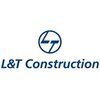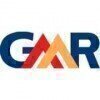Filter interviews by
Burns & McDonnell Electrical Design Engineer Interview Questions, Process, and Tips
Burns & McDonnell Electrical Design Engineer Interview Experiences
2 interviews found
I applied via Campus Placement and was interviewed before Jul 2023. There were 2 interview rounds.
Technical test of 1 hr
(2 Questions)
- Q1. Introduction - Tell us about yourself
- Ans.
I am an experienced Electrical Design Engineer with a strong background in designing and implementing electrical systems.
I have a Bachelor's degree in Electrical Engineering from XYZ University.
I have worked for 5+ years in the field, designing electrical systems for commercial buildings.
I am proficient in AutoCAD and other design software, ensuring accurate and efficient designs.
I have a strong understanding of electr...
- Q2. Technical questions about projects, internships and power systems(technical)
I applied via Naukri.com and was interviewed in Feb 2021. There was 1 interview round.
Interview Questionnaire
14 Questions
- Q1. 1.Tell me about yourself ?
- Q2. 2.what kind of input required for single line diagram?
- Ans.
The input required for a single line diagram includes information about the electrical system components and their connections.
Information about the electrical system components such as generators, transformers, switchgear, and loads
The connections between these components including the type of connection and the ratings of the equipment
The voltage level of the system and the type of system grounding
The protective devi...
- Q3. 3.Motor Feeder & Power Feeder requirements?
- Ans.
Motor feeder and power feeder requirements are essential for electrical design engineers to ensure proper functioning of electrical systems.
Motor feeder requirements include selecting the appropriate motor size, voltage, and current rating.
Power feeder requirements involve determining the load requirements and selecting the appropriate cable size and voltage drop.
Proper coordination and protection devices such as circu...
- Q4. 4.Hazardous area classification? What is Temperature Class? How do we categorized hazardous area?
- Ans.
Hazardous area classification involves categorizing areas based on the presence of flammable gases, vapors, or dusts.
Hazardous areas are classified based on the likelihood of the presence of flammable substances.
Temperature Class refers to the maximum surface temperature of equipment that can be used in a hazardous area.
Hazardous areas are categorized into zones based on the frequency and duration of the presence of fl...
- Q5. 5.Why we take 1.25 FLA for circuit breaker? 1.5 times for Contactor?
- Ans.
1.25 FLA is taken for circuit breaker and 1.5 times for contactor to ensure protection against overloading and short circuits.
1.25 FLA is the maximum current that a circuit breaker can handle without tripping.
1.5 times FLA is taken for contactor to ensure that it can handle the inrush current during motor starting.
This also provides protection against short circuits and overloading.
For example, if the full load current...
- Q6. 6.What is Percentage Impedance? Importance in short circuit current? Calculate short circuit current?
- Ans.
Percentage Impedance is a measure of the voltage drop in a transformer during a short circuit. It determines the ability of the transformer to withstand short circuit currents.
Percentage Impedance is the ratio of the rated voltage of a transformer to the short circuit current at its terminals, expressed as a percentage.
It represents the internal impedance of the transformer and is usually provided by the manufacturer.
A...
- Q7. 7.Protection schemes for Transformer & Generator?
- Ans.
Protection schemes for transformers and generators.
Overcurrent protection
Differential protection
Distance protection
Restricted earth fault protection
Backup protection
Buchholz relay protection
Thermal overload protection
Under/over voltage protection
Neutral grounding protection
- Q8. 8.How do we calculate Cabel sizing? Formula for Voltage drop? How do we calculate resistive & Inductive drop? Why do we limit voltage drop to 5 percent?
- Ans.
Cable sizing is calculated using the formula for voltage drop, which takes into account resistive and inductive drop. Voltage drop is limited to 5% to ensure efficient power transmission.
Cable sizing is determined by calculating the voltage drop using the formula: VD = (I * L * R * 2) / 1000
Resistive drop is calculated using Ohm's Law: Vr = I * R
Inductive drop is calculated using the formula: Vi = I * X
Voltage drop is ...
- Q9. 9Earthing Calculation? Standard used for earthing calculation? Resistance in substation ? Resistance for lightning protection?
- Ans.
Earthing calculation standards and resistances for substation and lightning protection.
Earthing calculation involves determining the resistance of the earth electrode system.
The standard used for earthing calculation is IEEE 80.
The resistance in substation should be less than 1 ohm.
The resistance for lightning protection should be less than 10 ohms.
Factors affecting earthing calculation include soil resistivity, electr...
- Q10. 10.motor contribution to the short circuit current?
- Ans.
The motor contribution to the short circuit current is significant and needs to be considered in electrical design.
The motor's impedance affects the short circuit current level.
The motor's starting current can cause a significant increase in short circuit current.
The motor's location in the electrical system can affect its contribution to the short circuit current.
The motor's size and type can also impact its contribut...
- Q11. 11.Types of Contactor? Maximum efficiency of Transformer?
- Ans.
Types of contactors include AC, DC, reversing, and definite purpose. Maximum efficiency of transformer depends on load and design.
AC contactors are used for alternating current circuits
DC contactors are used for direct current circuits
Reversing contactors are used to reverse the direction of current flow
Definite purpose contactors are designed for specific applications
Maximum efficiency of transformer is achieved at fu...
- Q12. 12.What is non linear loads ? Difference between non linear loads & linear loads?
- Ans.
Non-linear loads are electrical devices that do not have a linear relationship between the voltage and current.
Non-linear loads draw non-sinusoidal current waveforms.
They can cause harmonic distortion in the electrical system.
Examples of non-linear loads include computers, televisions, and variable speed drives.
Linear loads have a linear relationship between voltage and current, such as incandescent light bulbs.
Linear
- Q13. 13.Lighting calculation? What is light loss factor ? What is utilisation factor ? Formula ? Minimum lux required in substation ?
- Ans.
Explanation of lighting calculation, light loss factor, utilisation factor, and minimum lux required in substation.
Lighting calculation involves determining the amount of light required in a space.
Light loss factor is the reduction in light output due to factors such as dirt, dust, and aging of lamps.
Utilisation factor is the ratio of light received by a surface to the total light output of the lamps.
Formula for lighti...
- Q14. What is Apfc ? What is series reactor ?
- Ans.
APFC stands for Automatic Power Factor Correction. Series reactor is a device used to limit current flow.
APFC is a system that automatically corrects the power factor of an electrical network.
It uses capacitors to improve the power factor and reduce energy consumption.
Series reactor is a device that is used to limit the flow of current in a circuit.
It is used to protect equipment from overvoltage and to reduce harmonic...
Interview Preparation Tips
2.Prepare & analyse your CV thoroughly and prepare questions from that.
3.Be confident
Top trending discussions






Interview questions from similar companies

Electrical Design Engineer Interview Questions & Answers
Black & Veatchposted on 20 Aug 2022
I applied via Referral and was interviewed before Aug 2021. There were 4 interview rounds.

(1 Question)
- Q1. 1. Introduce yourself. 2. What was your role in your last organization. 3. What is the life cycle of a substation design 4. What was the voltage rating of the equipment. 5. What are the major equipments...
(1 Question)
- Q1. Nothing in particular.
(1 Question)
- Q1. Interview taken by a senior person, just to have a overall view of your.
Interview Preparation Tips

I applied via Company Website and was interviewed before Aug 2020. There were 3 interview rounds.
Interview Questionnaire
2 Questions
- Q1. They asked me about my before project, what is my responsibilities
- Q2. Then I give the details of of my project, say about my role and responsibilities
Interview Preparation Tips

I applied via Company Website and was interviewed before Dec 2022. There were 4 interview rounds.

(1 Question)
- Q1. About youself? Role and responsibilities? why are you interested?
- Ans.
I am an experienced Electrical Engineer with a passion for designing and implementing innovative solutions.
I have a strong background in electrical engineering, with a focus on power systems and control systems.
I have successfully designed and implemented electrical systems for various projects, including commercial buildings and industrial plants.
I am skilled in using CAD software for electrical design and have experi...
(1 Question)
- Q1. About yourself? Role and responsibilities? day to day site work? what do u know about bechtel? Electrical safety? Drawing details?shop drawing? LOTO system? NC for quality and safety? Earthing system? powe...
(1 Question)
- Q1. Documents? Current base salary? Expected base salary? Tentative date of joining?
- Ans.
I can provide the required documents and discuss salary and joining details.
I can provide all necessary documents such as resume, certifications, and transcripts.
My current base salary is $X per year.
I expect a base salary in the range of $Y to $Z per year.
I am available to join within X weeks/months.
I can discuss further details during the interview.

I applied via Naukri.com and was interviewed in Jan 2024. There was 1 interview round.
(1 Question)
- Q1. Transformer tests

I applied via LinkedIn and was interviewed before Apr 2022. There were 2 interview rounds.

(2 Questions)
- Q1. ANY ONE electrical SOLAR WORK
- Q2. Solar work electrical maintenance


(1 Question)
- Q1. Working of power transformer
- Ans.
A power transformer is an electrical device that transfers electrical energy between two or more circuits through electromagnetic induction.
Power transformers are used to step up or step down voltage levels in electrical power transmission and distribution systems.
They consist of a primary winding, a secondary winding, and a magnetic core.
When an alternating current flows through the primary winding, it creates a magne...
Interview Preparation Tips

I applied via Monster and was interviewed before Oct 2020. There were 3 interview rounds.
Interview Questionnaire
3 Questions
- Q1. Do u know Electrical load calculation
- Ans.
Yes, electrical load calculation is the process of determining the amount of power that a building or electrical system requires.
Electrical load calculation involves considering the power requirements of various electrical devices and appliances in a building or system.
Factors such as voltage, current, and power factor are taken into account during the calculation.
Load calculation helps in determining the appropriate s...
- Q2. Site experince
- Q3. Achievement in carrer
- Ans.
Developed a new power distribution system for a large manufacturing plant, resulting in a 20% increase in efficiency.
Designed and implemented a new power distribution system for a large manufacturing plant
Collaborated with a team of engineers and technicians to ensure successful installation and operation
Resulted in a 20% increase in efficiency and significant cost savings for the company
Interview Preparation Tips


(1 Question)
- Q1. Pvsyst losses, cable sizing, fuse derating
Burns & McDonnell Interview FAQs
Some of the top questions asked at the Burns & McDonnell Electrical Design Engineer interview -
Tell us how to improve this page.
Burns & McDonnell Interviews By Designations
- Burns & McDonnell Electrical Engineer Interview Questions
- Burns & McDonnell Instrument Engineer Interview Questions
- Burns & McDonnell Piping Engineer Interview Questions
- Burns & McDonnell Data Analyst Interview Questions
- Burns & McDonnell Structural Engineer Interview Questions
- Burns & McDonnell Graduate Engineer Trainee (Get) Interview Questions
- Burns & McDonnell Electrical Design Engineer Interview Questions
- Burns & McDonnell Analyst Interview Questions
- Show more
Interview Questions for Popular Designations
- Electrical Engineer Interview Questions
- Electrical Technician Interview Questions
- Electrical Designer Interview Questions
- Electrical Supervisor Interview Questions
- Electrical Maintenance Engineer Interview Questions
- Electrical GET Interview Questions
- Diploma Electrical Engineer Interview Questions
- Senior Electrical Engineer Interview Questions
- Show more
Burns & McDonnell Electrical Design Engineer Interview Process
based on 3 interviews
Interview experience
Interview Questions from Similar Companies
Fast track your campus placements
Burns & McDonnell Electrical Design Engineer Reviews and Ratings
based on 4 reviews
Rating in categories
|
Electrical Engineer
88
salaries
| ₹0 L/yr - ₹0 L/yr |
|
Senior Associate Engineer
50
salaries
| ₹0 L/yr - ₹0 L/yr |
|
Electrical Designer
50
salaries
| ₹0 L/yr - ₹0 L/yr |
|
Project Control Engineer
50
salaries
| ₹0 L/yr - ₹0 L/yr |
|
Senior Associate Electrical Engineer
36
salaries
| ₹0 L/yr - ₹0 L/yr |

Black & Veatch

AECOM

Jacobs Engineering Group

Fluor Corporation
- Home >
- Interviews >
- Burns & McDonnell Interview Questions >
- Burns & McDonnell Electrical Design Engineer Interview Questions

















